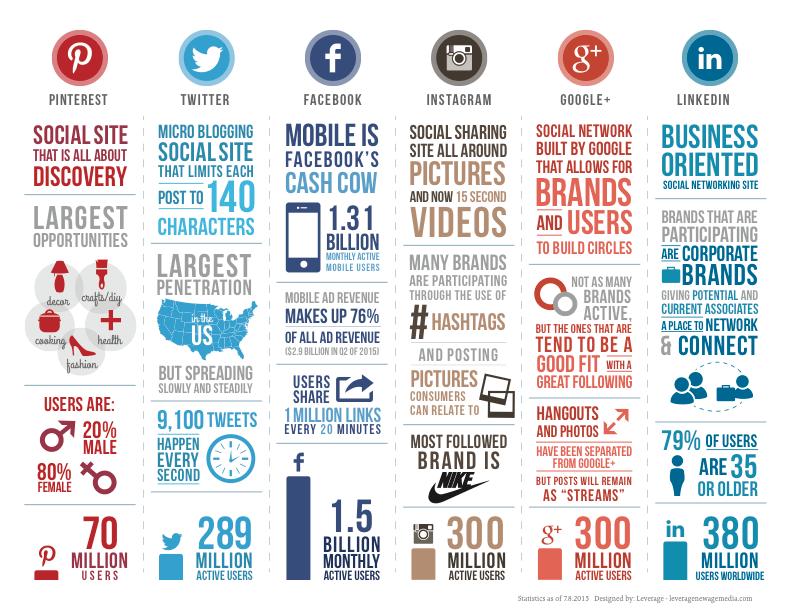using social media to manage your business reputation

While not necessarily the be-all-end-all for your reputation, your social media presence can still significantly affect how your business is seen. Of course, you can’t just make accounts in all the platforms and expect positive results right away.
You need to know what to focus on and maintain that presence in order to benefit from social media. Here are 10 tips to doing just that in order to properly manage your business reputation.
Choosing the Best Platform for You
Focusing on just a couple of social media platforms ensures that you can manage them consistently and efficiently. Each platform is different and is designed for a different type of content, so you can’t just clone posts between your different profiles and expect all of them to be effective.
You can choose to stick with just one platform, but having two or more lets you have more diversity with your content and cover more ground. Different users have different social media habits, so being able to reach your target audience in the right platforms should be your goal.
You can keep a spreadsheet that lists every social media network you’re interested in and plan out the profiles you want to create in them. Make sure they’re relevant and are trusted by your target audience.
You definitely want to have a Facebook page for your business as it’s the top social network in the world and can accommodate many types of content. If your business sells products that are visually appealing, you can also have an Instagram profile to showcase them. If you interact a lot with your audience, having a Twitter account is also a good thing.
Deciding on a Good Brand Name
Of course, you want to primarily use your existing business brand name for your social media profiles. However, there’s the issue of how you want it to look as a handle, how easy it would be for people to remember, how unique it is, and so on.
If possible, you want to have the same handle for all your profiles. However, some platforms have different character limitations and that username may sometimes be unavailable to you. Having a handle that fits all those platforms should help you build trust with your customers as you make it easier for them to follow you across the board.
Creating and Populating Your Profile
You don’t just create a social media profile, upload a banner image and/or profile picture, and leave it at that. You should fill in as much information about your company as possible.
Enter your address, website URL, support email, other social media links, description of your company, and so on. Make it look as formal and legitimate as possible to put a good front for your business. It’s also good for SEO so that profile can rank in Google search results.
Verifying Your Accounts
Being verified means that profile is the real thing that represents you and isn’t a fake or parody account run by someone outside your company or a bot.
While it’s not a real necessity, having the option to get verified can greatly boost your visibility in that social media platform. Having that checkmark can give a greater air of respectability and trust to audiences.
Different platforms have different rules or requirements in order to be verified. Read up on them for your preferred social media network and jump at the chance when you see your business and profile are qualified for it.
Having a Well-Trained Social Media Team
This is usually seen as an afterthought, but having a social media team with ample training means being able to do more things and reach more people with your profiles.
Perhaps you may be doing all social media stuff by yourself at the moment, but you’ll later have to bring in a couple of people over to run them for you so you have more time to do other things in the business.
The training isn’t just a one-off, but ongoing as the social media landscape is ever-changing. You need a team of people who are savvy and updated with all the trends and happenings online.
They need to have that sixth sense for what should be posted to get more positive attention and what shouldn’t as they’ll get either negative attention or nothing at all.
Need social media help for your business? Let us help!
Posting Regular Content
People aren’t just going to like or follow it simply because it exists. You’ll have to do more in order for it to be relevant, and you’ll have to do it consistently. That means posting regular content.
It may take you a while, but you should soon have a content strategy that best suits your business. It can be pictures of your store and your products and services on Instagram, blog posts shared through Facebook and Twitter, or even all of the above and so on.
You can also partake in the latest trending hashtags and memes if it fits your brand’s image. You can create videos and post them on YouTube, Facebook, Twitter, or Instagram, depending on length and subject matter.
Multiple posts can be produced beforehand and scheduled accordingly. You wouldn’t want to post them all at once in one day since that will flood your audience and end up not getting as many eyes on each. On the other hand, you can’t have your content be posted too sporadically.
You should be able to post around a couple of pieces of original content daily in peak hours. If you can’t post original content that frequently, you can fill the time by sharing other people’s posts that may be relevant to your business, so long as you give credit.
Tracking and Moderating Activity
Moderating your page is important as you need to maintain a good environment for everyone to interact. Toxicity can creep in as you get more followers, and some people are just there to get a reaction with less-than-savory comments that come out of nowhere, even if you’re doing good by your customers for the most part.
Of course, you have to make sure you can separate the trolls from the legitimate complaints and criticisms, which you should respond to with respect and professionalism.
Then there are the negative reactions to your brand that are done privately. A vast majority of people don’t complain directly to the brand and instead rant on their own social media profiles when they have negative experience with a business, and they can sway their friends and family from wanting to give your business a try. There are even times when those rants go viral and can significantly affect your brand.
In that case, you should actively listen for those mentions and address those concerns. Customers appreciate it when brands make an effort to address concerns directly.
But even if you decide not to directly respond to these “dark complaints,” which is how it will be for most of them, it’s still good to listen to their concerns and know what you can fix and improve on. It’s some of the most valuable feedback you can ever get, as painful as it can be.
Responding to Users Cordially and Professionally
As mentioned before, you’re bound to get negative comments every now and then, even if you’re doing well. After all, it’s a cardinal rule that you can’t please all the people all the time. But what really matters here is how you handle that negativity as responding to it badly can negatively impact your brand reputation.
Responding to these negative comments must be done with a deft touch and a cool head. You must be willing to admit to and apologize for mistakes, as well as offer to make up for them however possible. That should at least cushion the blow of a bad product or service that may have slipped through the cracks.
Deleting negative comments is a bad idea. As mentioned before, you must be able to determine which negative comment is a troll and which is a legitimate complaint. This is why your social media team needs to be trained constantly in having that “sixth sense” for whether a comment is a real concern or just left there to bait unsuspecting prey.
Building and Maintaining a Good Reputation
While business websites are mostly about traffic and sales, social media profiles are meant for building positive brand reputation. Having a combination of different types of social media that includes an image-based channel lets you boost your visibility on both Google searches and image searches.
However, it doesn’t mean you should be posting unique content all the time. If you’re unable to manage posting every single day, do know that weekly posts are enough to maintain your reputation and show customers that your business is still alive and buzzing.
But what’s really important is interaction. Having conversations with customers and addressing their concerns are way more important than content, and that’s really what your social media presence should be geared towards.
Talking to people is the reason why social media exists in the first place, so use that to your advantage in order to maintain your good business reputation.
Telling the Story of Your Brand
Having social media profiles give you opportunities to share what goes on with your brand. It’s not always about selling products, but also giving a glimpse into how things happen in your business and the people behind the scenes. It’s all about sharing your narrative and showing customers that it’s a brand run by human beings like them.
You can highlight all the positive things your brand strives for, including giving back to your community through volunteering and charity. All of that can pay dividends by giving your brand a positive image that no amount of money can buy you in an instant.

